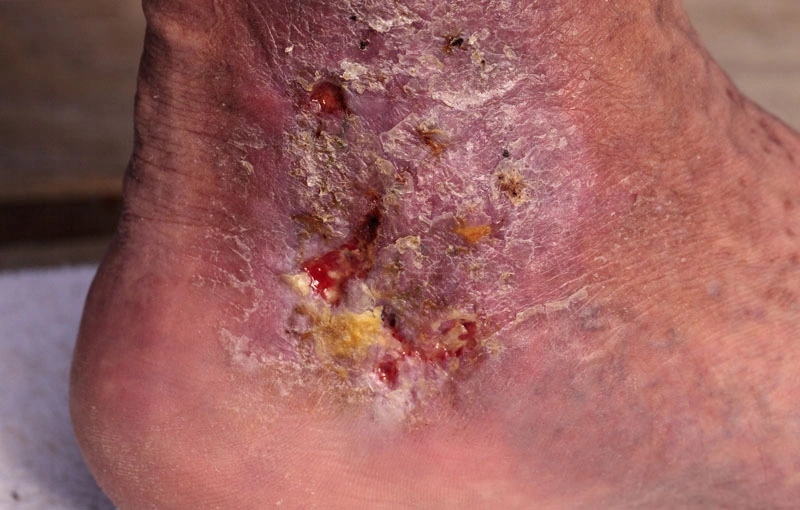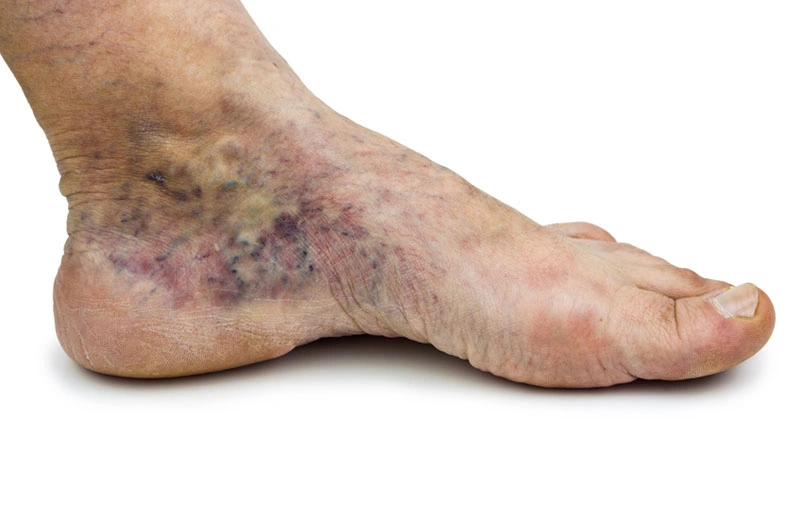Varicose Veins Treatment
- Home
- Varicose Veins Treatment
Varicose veins are enlarged, twisted veins, most commonly found in the legs, causing discomfort like pain, heaviness, and swelling. While they’re primarily a cosmetic concern, varicose veins can lead to complications such as blood clots or ulcers if left untreated. Fortunately, a variety of treatment options are available today, from minimally invasive procedures to traditional surgeries, designed to alleviate symptoms and improve the appearance of your legs.
Causes of Varicose Veins
Varicose veins develop when the valves inside your veins weaken or fail, causing blood to pool and veins to enlarge. Several factors contribute to this condition:
- Genetics: A family history of varicose veins increases your risk.
- Age: As you age, veins lose elasticity and become more prone to damage.
- Pregnancy: Hormonal changes and increased blood volume can affect vein health.
- Obesity: Extra weight places pressure on veins, making them more susceptible.
- Prolonged Standing/Sitting: This can increase pressure on the veins and lead to varicosities.

Symptoms of Varicose Veins
Common symptoms of varicose veins include:
- Pain and Heaviness: Often a persistent aching sensation in the legs, especially after standing for long periods.
- Swelling: Increased swelling, particularly at the end of the day.
- Skin Changes: Dry, itchy skin or darkening around the affected veins.
- Leg Cramps: Painful muscle cramps, particularly at night.
Early treatment is essential to avoid complications like blood clots, ulcers, or skin changes.
Why Early Treatment is Essential
Treating varicose veins early helps prevent further complications. Delayed treatment can lead to chronic pain, ulcers, or blood clots. Early intervention can relieve pain, improve circulation, and prevent the condition from worsening. Moreover, early treatment can also enhance the aesthetic appearance of your legs, boosting confidence and well-being.

Treatment Options for Varicose Veins
A variety of treatment options are available for varicose veins, ranging from minimally invasive procedures to traditional surgeries. Let’s explore some of the most common treatments:
1. Endovenous Laser Ablation (EVLA)
EVLA uses laser energy to seal off the affected veins. The laser is delivered via a catheter into the vein, causing it to collapse and be absorbed by the body over time.
Example : Sarah underwent EVLA for painful varicose veins. After the procedure, her veins were no longer visible, and she resumed normal activities within a couple of days.
Pros:
- Minimally invasive with a high success rate
- Quick recovery time
- Minimal discomfort

2. Sclerotherapy
Sclerotherapy involves injecting a chemical solution into smaller veins, causing them to collapse and fade. This treatment is most effective for smaller veins or spider veins.
Example: John had spider veins treated with sclerotherapy. Within weeks, the veins gradually disappeared, improving both his appearance and comfort.
Pros
- Quick procedure with no need for anesthesia
- Effective for small veins
- Minimal downtime
3. Radiofrequency Ablation (RFA)
RFA uses radiofrequency energy to heat and close varicose veins. A catheter is inserted into the vein, and radiofrequency waves seal the vein shut, allowing the body to absorb it.
Example: Mark chose RFA for large varicose veins in his calves. He returned to normal activities soon after the procedure and experienced significant relief from pain and swelling.
Pros
- Effective for larger veins
- Minimally invasive with little downtime
- No need for general anesthesia
4. Venaseal Closure System
Venaseal is a newer treatment that uses medical adhesive to close off varicose veins. The adhesive is delivered through a catheter, effectively sealing the vein without the need for incisions.
Example: Laura underwent Venaseal treatment for her varicose veins. The procedure was quick, and she was able to return to work the next day, with no visible scarring.
Pros
- No incisions or stitches
- Quick recovery time
- Minimal discomfort
5. Vein Stripping and Ligation
Vein stripping involves surgically removing larger veins that are causing symptoms. It’s a more traditional method, typically used for severe cases where minimally invasive treatments aren’t effective.
Example: Emily opted for vein stripping after developing large, painful varicose veins. Though recovery was longer, she was satisfied with the results and had no further issues.
Pros
- Effective for larger, more severe veins
- Provides long-lasting results
Cons
- Requires general anesthesia
- Longer recovery time
- Risk of scarring
Conclusion
Varicose veins can cause discomfort and cosmetic concerns, but numerous treatment options are available to provide relief. Minimally invasive methods like EVLA and RFA offer effective, quick results, while traditional surgical methods like vein stripping may be necessary for more severe cases. Early treatment is crucial to preventing complications and improving your quality of life.
Consult a vascular specialist to determine the most appropriate treatment for your condition and take the first step towards healthier, pain-free legs.
Frequently Asked Questions (FAQs)
If you experience pain, swelling, or discomfort from your varicose veins, it’s time to seek treatment. A consultation with a vascular specialist can help determine the best course of action.
Many insurance plans cover treatments for varicose veins, especially when the condition causes pain or health issues. Check with your provider for specific coverage details.
Recovery time depends on the procedure. Minimally invasive treatments like sclerotherapy and EVLA typically require little downtime, while more invasive treatments like vein stripping may take several weeks for full recovery.
While recurrence is rare, varicose veins can return if the underlying causes are not addressed. However, most treatments provide long-lasting results.
CASE 1
54yr male patient with complains of dragging pain, swelling and discolouration in the lower aspect of the left leg since one year. At present there is a non healing venous ulcer seen in the medial aspect of the ankle. Also noted multiple dilated tortuous outpouchings (varicosities) in the calf region. Post endovenous laser ablation of the varicose veins, the wound healed in 2 months.


Would you like to request an appointment?
You can call on +91-98200 86520 for Appointments or fill the form below
If you’re ready to explore treatment options for varicose veins, schedule a consultation with our expert team today. Let us help you find the best solution tailored to your needs.
